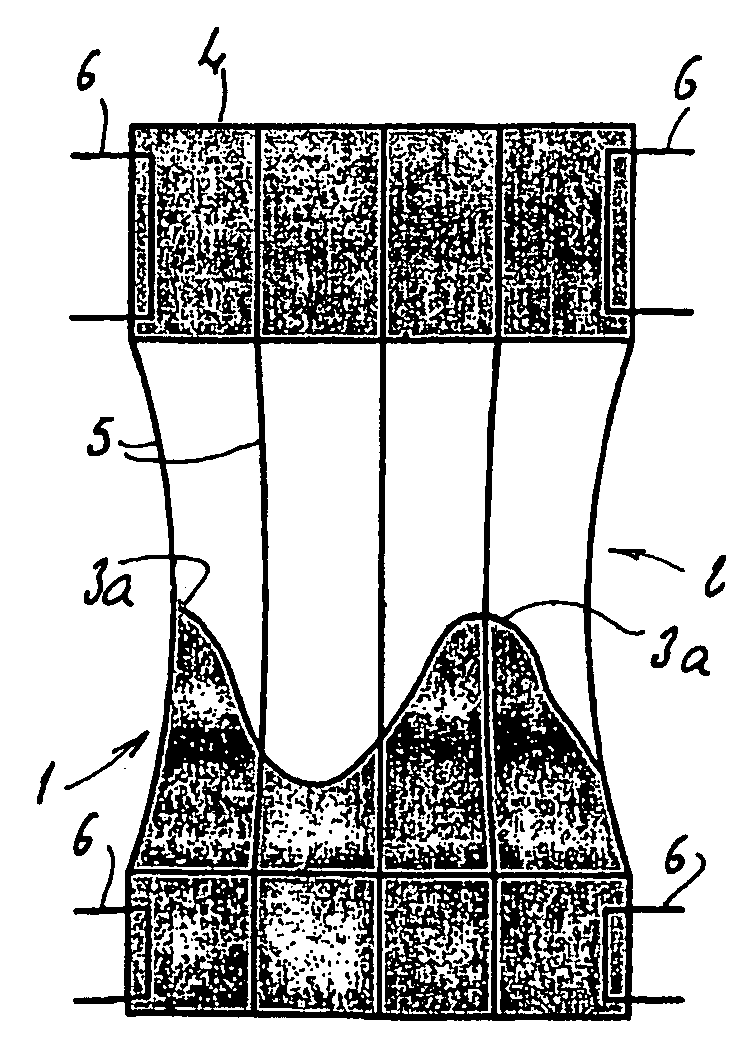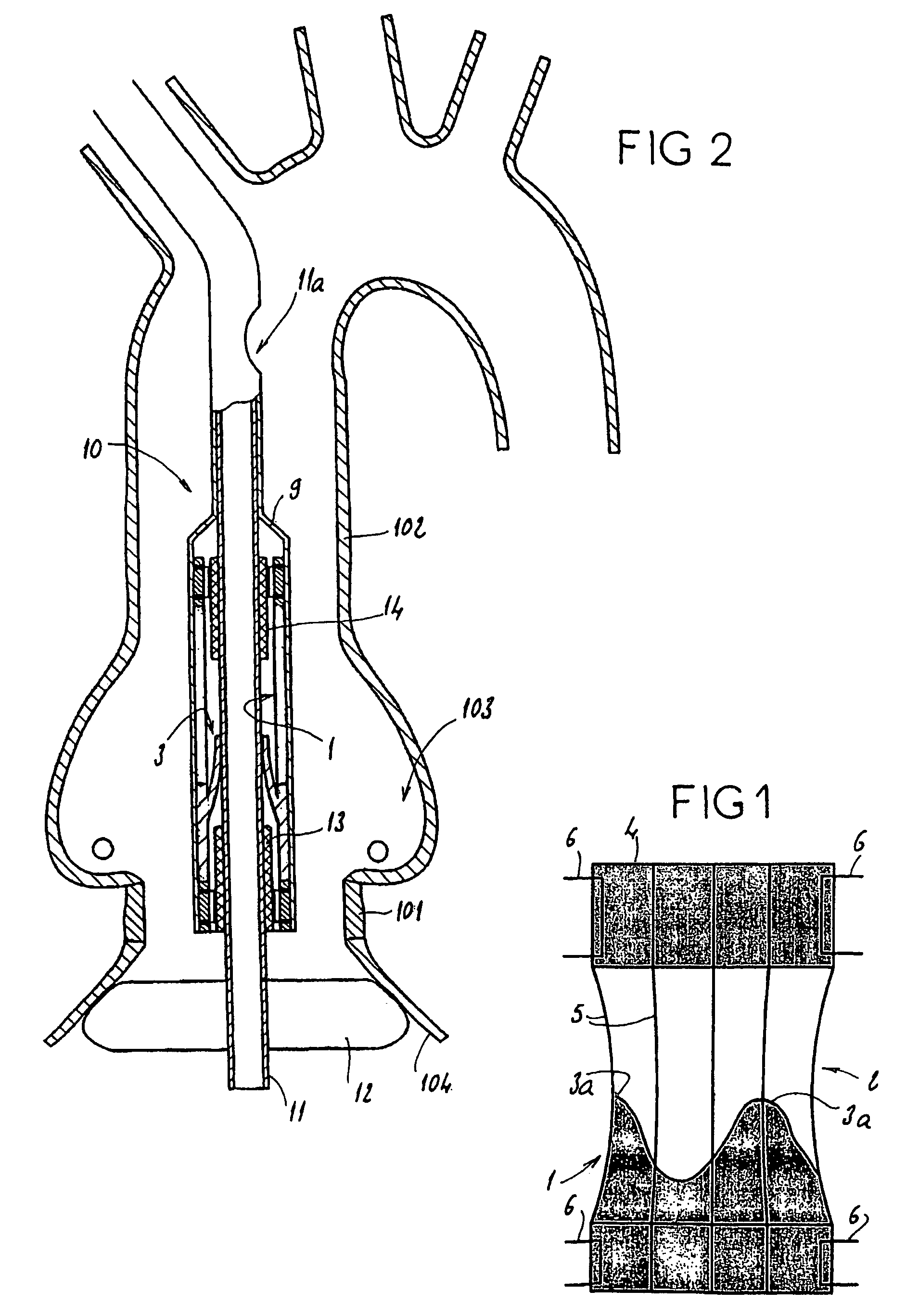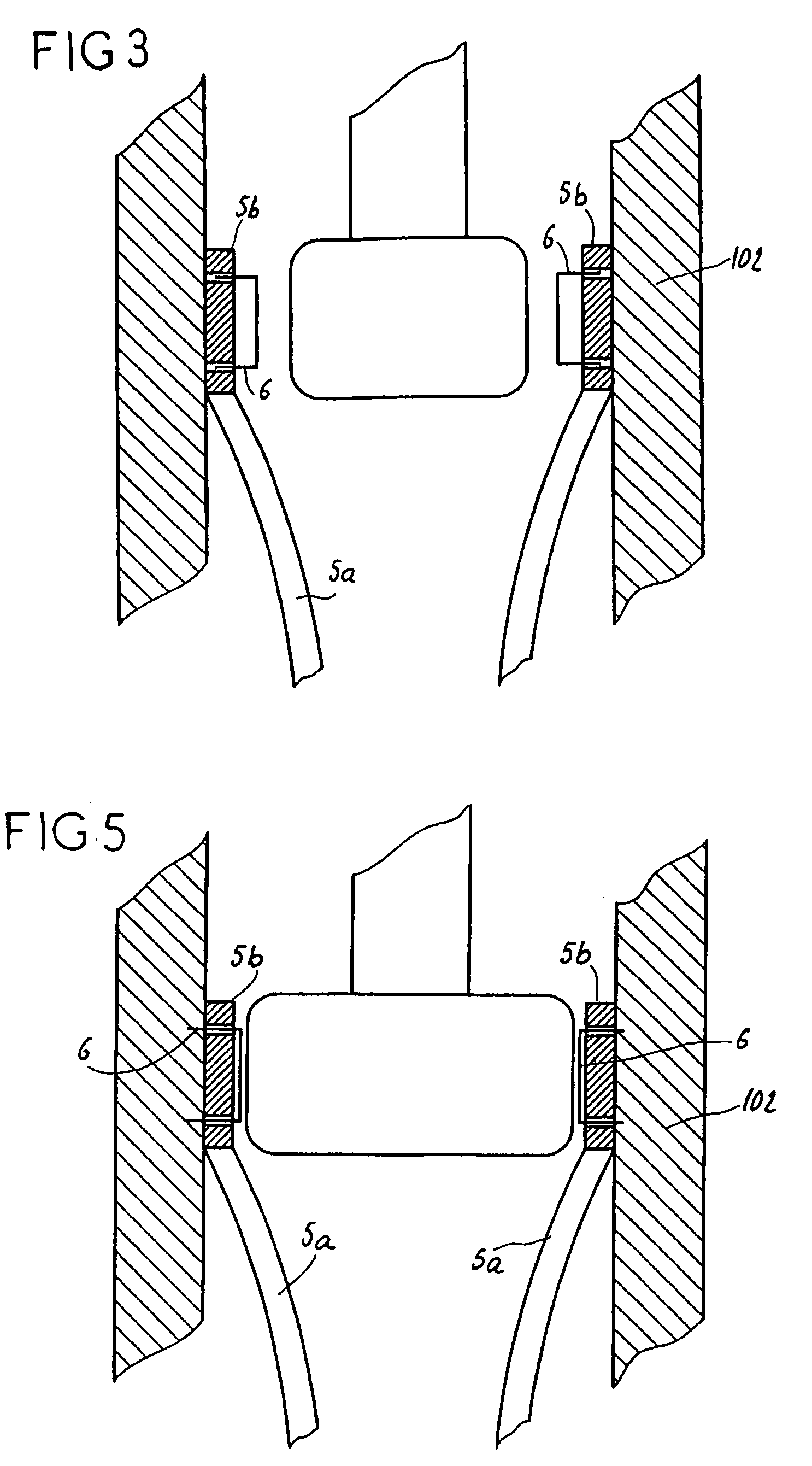Assembly for setting a valve prosthesis in a corporeal duct
a valve prosthesis and corporeal duct technology, which is applied in the direction of prosthesis, surgical staples, blood vessels, etc., can solve the problems of limiting the expansion force that it is possible to give to the stent, damage to the corporeal duct, and risk of valve damage, so as to eliminate any risk of covering the coronary ostia
- Summary
- Abstract
- Description
- Claims
- Application Information
AI Technical Summary
Benefits of technology
Problems solved by technology
Method used
Image
Examples
Embodiment Construction
[0043]Referring to FIG. 1, the present invention comprises a prosthetic valve assembly 1. The assembly 1 comprises a support 2 on which is mounted a valve prosthesis 3, which in one embodiment is an aortic valve. The support 2 preferably comprises a distal and proximal tubular portion 4 separated by a plurality of elongated reinforcing elements 5. The tubular portions 4 are preferably made of a pliable material that is slightly stretchable in the circumferential direction of these tubular portions 4. In particular, the tubular portions may be constructed of a polymer or of a fiber fabric known under the name “dacron,” or even in a biological tissue like the pericardium. The diameter of these tubular portions 4 should preferably correspond to the diameter of the target native lumen, for example, the aorta, as shown in FIGS. 2 and 4, where the native valve ring 101, the wall 102 of the aorta, and the coronary ostia 103, are shown.
[0044]Each elongated reinforcing element 5 is construct...
PUM
 Login to View More
Login to View More Abstract
Description
Claims
Application Information
 Login to View More
Login to View More - R&D
- Intellectual Property
- Life Sciences
- Materials
- Tech Scout
- Unparalleled Data Quality
- Higher Quality Content
- 60% Fewer Hallucinations
Browse by: Latest US Patents, China's latest patents, Technical Efficacy Thesaurus, Application Domain, Technology Topic, Popular Technical Reports.
© 2025 PatSnap. All rights reserved.Legal|Privacy policy|Modern Slavery Act Transparency Statement|Sitemap|About US| Contact US: help@patsnap.com



